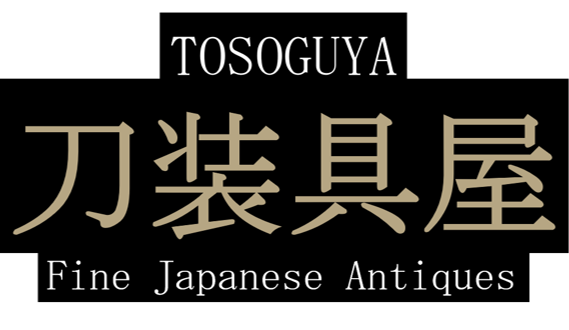

The motif of this kōgai is of a riding crop (horse whip) or muchi (鞍図). Horse trappings are common motifs during the late Muromachi, and they collectively began to represent control over ones path in life. The muchi was a favorite singular motif for kōgai since its shape made for a perfect kōgai ji-ita motif, especially when it was overlain with gold to pop-out visually from the field of black shakudō nanako.
The kōgai is made of black shakudō (赤銅), with a very finely punched background of nanako (魚子地). The fine nanako on the plate shows almost no wear, which is quite remarkable considering the age of the piece. Gold is applied to accentuate the motif using a technique called uttori, where a thin gold foil covers the carving and is pressed into very thin slots around the areas of relief. Gold is also inset into the carved curvilinear motif at the back of the decorative plate, called the warabite. The NBTHK Tokubetsu Hozon papers use an alternate term for uttori, in this case, kanabukuro-kise iroe (金袋着色絵), which literally means 'application of a gold bag [coloration]'. The motif itself is a executed in high relief or takabori (高彫). The gold application is very well preserved on this kōgai, and the plate and nanako are in excellent condition. Comes with a custom fitted box. A riding crop is a classic motif during this period, and was intended to convey surety of path and determination, critical qualities for a high ranking samurai or daimyo.
Translation of the Tokubetsu Hozon paper description follows:
鞍図笄 (Muchi
zu
kōgai)
無銘 古後藤 (Mumei Ko-Gotō)
赤銅 魚子地 高彫 金袋着色絵 (Shakudō nanako-ji
takabori kanabukuro-kise iroe)
Heisei 26th year (2014) October 31st
Measurements: 21.18cm x 1.30cm x 0.4cm
Muromachi Period (室町時代), late 15th to mid 16th century
SOLD
